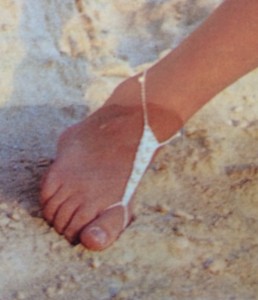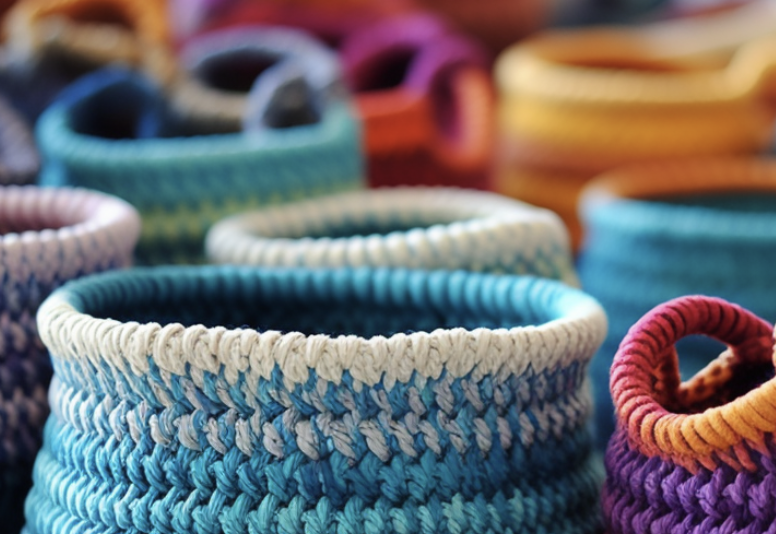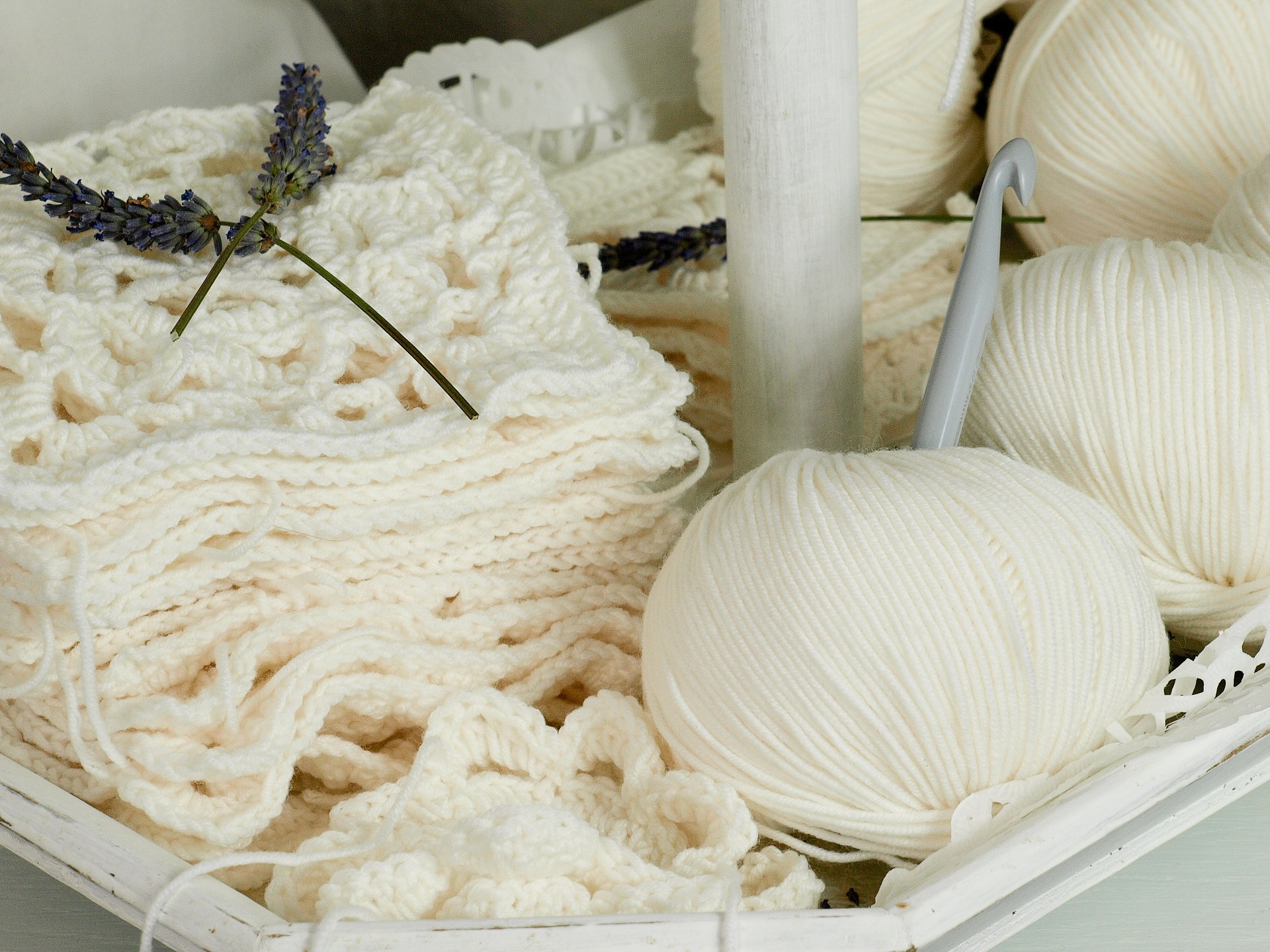by Alison | Crochet Business
by Alison Stapleton
Here are some ideas for your micro business
Many people share the dream to have their own little business which will make a bit of money and through the actual art or craft involved will satisfy their creative urges and needs.
A micro business that you run from your home, or on the go from your virtual office, will typically fall into one of five main categories:
- Craft – Crochet, knit, sew, bake, art
- Writing and editing
- New age skills
- Personal services
- Selling digital products
You may do more than one activity and some will appeal to you straight away.
You have to be realistic. Clearly if you are not a hairdresser you can’t cut hair as a micro business. But if you can crochet then you can make crochet your micro business.
Craft and Handiwork
If you can do any of the crafts in the list below then you can sell your items at flea markets and wholesale to shops.
- Knitter
- Crocheter
- Artist – painter
- Wood worker – bird houses
- Cookie baker
- Sandwich maker
- Dressmaker
- Artist – fibre
- Jewelry maker
- Candle maker
- Candlestick maker
Writing and Editing
If you can write compelling copy you could turn your hand (or your pen) to one or two activities and projects on this list.
- Write feature articles
- Write patterns – knit and crochet
- Write stories and memoir
- Write “how to” articles
- Write recipes
- Travel writer
- Horoscope writer
- Cooking writer
- Restaurant critic
- Stringer
- Novelist
- Author
- Poet
- Lyricist
- Local ad newsletter (selling ad space in the coffee news)
New age services in your home
If you have skills in the New Age professions as listed here you could easily start a micro business or practice in one of them.
- Astrologer
- Palmist
- Tarot reader
- Reiki master
- Clairvoyant
- Crystal ball reader
- Tea leaf reader
- Runes reader
- Numerologist
Personal services
This list is slightly more skilled and maybe you did go to hairdresser school years ago and if so you can dust off your scissors and start your micro business right now.
- Hairdresser
- Dressmaker
- Manicurist
- Makeup artist
- Bookkeeper
- Personal trainer
- Garden lady
Things to sell online – digital items
Selling digital downloads online does need you to have some skills in computers and a bit of writing but is can be done. Make sure you write about a topic that interests you and your passion for the subject will come through the words.
- Worksheets “how-to” ideas
- Ebooks
- Webinars
- Videos classes on YouTube
- Copy writing and editing services
- Resume writing
- Form filling in for non English speakers
- Blogger – Adwords
- Images – info graphics
Not all will appeal to everyone. If you can be quite clear on what you can do and what you can’t do then that makes the choice easier.
Know your limitations
Most people can fry an egg but that doesn’t mean you can be the cookie baker for a vegetarian deli down the street.
It can be seductive to fall into the trap of doing something that you are nearly good at (like baking). If you are not passionate about the thing then dismiss it as an option for you.
If your sister-in-law knows a dahlia from a dandelion and can weed gardens that doesn’t mean you can too.
Back to your notebook. Draw three columns titled, “Yes I can”, “No I can’t” and “Maybe I could.”
Take the list above and write five options in each column.
This will make your choices clearer.
by Lynn King | Crochet Business, Crochet Stories
by Lynn King
 Kate sewed. She loved sewing.
Kate sewed. She loved sewing.
She made sweat pants for the six month to two year age group.
She sewed up her samples and took orders from her friends and a small order from local kids clothing shop.
It was small potatoes but she kept going. She enjoyed working with her hands.
Kate was retired and had the time to give to her sewing. She only sat at her machine in the day and only when the light was good. She started sewing at 10am and worked until 3pm each day from Monday to Friday.
At first she sewed in the colour and with the cloth she liked. As time went on she took orders for ten blue and ten red sweat pants. these were the popular colours for the pants.
The sweet spot
By buying the cloth in bulk (and getting a little discount from the draper), and making ten blue and red size small, all in one sitting she reached her sweet spot where she could not be any more efficient.
At this stage she could make 19 pants a week. This was not that many really but more than she made as a hobby.
This was how her production was; cutting out on Monday, sewing the main seams on Tuesday, finishing off the garments on Wednesday, pressing the pants on Thursday and packaging and posting her finished items on Friday.
Week in and week out.
It was a case of no work and no pay.
Full production
Now whilst this is good in the short term (six months) there comes a time when you can’t keep up with the orders.
The kid’s shop that took ten a week had a branch in another city and wanted ten for that shop as well.
What to do?
If Kate got sick she couldn’t sew.
She was turning over $40 and making $160 each week at full tilt.
But 19 was all she could make. She could only make nineteen sweatpants a week. If she took a day off she made less money.
Time and money
The realization eventually came to her that she could never make more money – only make less.
That no matter how hard she tried there was a physical limit to how much she could do each week and it all depended on her doing it.
With no one else to help and no more time she could do no more and earn no more money.
And, the sweat pants kept her so busy she couldn’t do the creative wrk that had drawn her to sewing in the first place.
The challenge
It is a challenge faced by many crafters between earning some money, which is important, and being creative and enjoying what you do.
This is known as piece work when you are paid by the item. If there are no items to sell there is no pay for you.
But piecework is an entry into having an independent micro business and this is what attracts many people every year – freedom.
Piecework has its place and can be sustained indefinitely. It is what I recommend to crafters to get them going. Take the plunge and put you crafts out there.
You may also like:
by Alison | Crochet Business
by Alison Stapleton
 Your Money and Self Worth
Your Money and Self Worth
We feel good when we have money. But how much money we need to have in order to feel good is relative.
Some people actually feel better when they have less or even not enough.
It depends where you come from and your family, background and upbringing, that determines how you feel about money and self worth.
Sometimes the road to financial bounty needs a little help from within. This has nothing to do with your earning ability but is a deep issue that can be a blockage to building a thriving micro-business.
If you are serious about growing your crochet business or other craft venture then think about whether you have accepted roadblocks to wealth and prosperity.
A Vow of Poverty
Some people have taken a vow of poverty.
A vow of poverty is often an unconscious decision to be poor. You believe that it is your fate to be poor, and that you cannot be otherwise, no matter how hard you work or what you do.
It may not have been a conscious vow of poverty, or even taken in this lifetime, but if you think this may be you then you need to release yourself from any vow of poverty.
Write the following on a piece of paper:
I free myself from any vow of poverty taken in this life or a past life.
I humbly accept my bounty as deemed by God.
I am worthy of a financially good life while on planet Earth.
It is in my spirit to prosper.
Amen
Now revoke your vow of poverty by saying out loud the written vow. If you feel you need more affirmation then read it out loud to yourself every night before bed.
Next you have to live by this freedom.
You will start to believe that you have permission to:
- Earn a fair wage or salary
- Earn a good income
- Accept all offers of financial help
- Consider every wealth improvement idea
- Charge for your goods and services at market value
- Charge above market value for things you are highly skilled in doing
- Honor ever cent you get
- Respect your money as you respect yourself
These simple steps can clear the free flow of abundance towards your life.
Embrace it.
by Alison | Crochet Business
Your Crochet Business
What is a micro business?
A micro business is any little business that makes money. For example when you crochet something and sell the finished product or the pattern. Typically a micro business is a one man (or woman) show. If you crochet (or knit or craft) and sell your items you have a micro business.
A micro business can also be referred to as a the new word of solopreneur. Like an entrepreneur, but going solo, or on your own. A micro business can grow to two, three or four people working together but it is usually that one person does it all, all the business things like:
- The ideas,
- design,
- sourcing materials,
- manufacturer of the items,
- advertising,
- production,
- marketing,
- promoting,
- website management,
- social media, pricing,
- selling and
- banking.
Phew!
You may not realize you have a micro business
If you make items and give them to others or to charity then you are not a micro business. If you do take money for your crafted items then you have a micro business.
Good karma
All income and costs need to be declared to the tax man. Don’t start pocketing the cash if you do it creates bad karma around money for you in the future.
You want the money to flow towards you and that you will prosper. If you cheat the system you create blockages for the money stream and this stops other good things like prosperity Being able to gravitate towards you.
Start today and get your abundance flowing in
Note every cent in and out from day one. You will likely get a refund anyway if your turnover is low and under one thousand dollars a year. Do not worry about this now, but make records. Money in and out. Keep receipts for every purchase for your creations like that ball of yarn from the wool shop or a new paintbrush for your art.
Start today. Let the universe know that you are in business. If you think you may have taken a vow of poverty now is the time to let it go.
Thought, word and deed
First you think of the idea of say, to make a hat. Then you speak about your ideas to make the hat. Then you do the deed and make the hat.
There is a sequence to creativity.
I want to add another step and that is to journal the process and to capture the moment.
Journaling your ideas
Get a notebook. Open it to the first double page.
On the left hand side draw the image of the item, the pattern diagram the finished garment. Here you can add the color palette and note or scetch any special details. On the right hand page write “Hat” (or whatever your craft project is) at the top. Write all the details of the yarns, pattern and hook, and instructions to make the hat. Two thirds of the way down the page draw a line across the page.
In the lower right part express your feelings about the project. Are you excited, scared, happy, overwhelmed, or finally at peace? Keep your notebook handy. Over the days and weeks of the project, journal the process and your feelings about the item.
Choosing your Notebooks
I like Moleskin notebooks. Size A5 which is about 5” wide by 8” long. Get the one with plain blank pages and no lines.
On a side note, they also have a screenwriters design with a story board format which is fun to use for a “How-to” project.
Creative Journal
Don’t let another idea pass you by. Note it in your creative journal. You can go back over your many ideas later and weed out what is good and doable, and look at why a project is not going to get done. Become used to capturing your ideas.
Author Bio
Alison Heathcote is a passionate crochet enthusiast and dedicated business blogger. She combines her love for crafting and entrepreneurship to inspire and connect with others.
With a knack for transforming yarn into beautiful creations and a flair for sharing valuable insights about running a successful crochet business, Alison embodies the perfect blend of creativity and practicality.
Read more about Alison’s crochet journey.
More Articles
If you enjoyed this post and crochet is your thing, you may like some other crochet articles from our blog.
by Alison | Crochet Business, Crochet Stories
by Alison Stapleton
One morning there was an advert in the local newspaper it read,
“Crocheters wanted, meet me at the Table View Mall café at 12 noon on Saturday, Jenny.”
As a crocheter clearly this ad was for me. Wasn’t it?
I duly arrived at the café on the appointed time to find that I was not the only one who could crochet.
There were twenty-five to thirty women chatting and drinking coffee and waiting for noon.

Jenny arrived all suntanned and long blonde hair. She had a bag of little squiggly items and dropped one in front of each of the crocheters.
Then she passed around a little ball of shirring elastic in a variety of colours and gave everyone ten little beads.
The squiggly thing turned out to be a foot ornament worn on the beach with bare feet. It looped over your big toe and then around your ankle. There was assorted African beads on the top as decoration. It was a fun item for summer.
Jenny said to us all, “Make me a sample just like this one and see me back here next Friday at the same time.”
There was a lot of chatter amongst the crocheters and off they went. I went home clutching the sample, elastic and beads.
The pattern was easy to replicate, but the difficult part was working with the shirring elastic. It stretched and I had to try many different sizes of hooks to get the tension just right.
After several attempts, I made what I thought was a good copy of the sample she gave me. I was ready to show my creation to her. I wondered how the other women had got on.
Friday arrived and I was there early with my coffee in front of me waiting for the rush of crocheters.
No one came.
Jenny arrived at five past twelve she saw me and came over to my table. I showed her my work. She liked it. Another woman arrived with her attempt and that too was good.
We were the only ones to bring a sample of our work and the others did not bother.

Piecework production
So it began, we would be paid $50 for ten pairs of barefoot sandals which Jenny would sell the at her flea market stall at the Green Market Square for $25 each.
I worked every moment I had spare to get my ten pairs done on time. Not that I had much time with a six month old baby, a toddler of two years and two children aged eight and eleven at school.
On top of this we were renovating the house and had the kitchen in disrepair for months. But I pressed on.
Friday came I met her at the café and she gave me the cash and I gave her the now called “barefoot sandals”.
All this kept going week after week, for six months as the summer wore on.
Jenny’s original designs and her sandy feet were featured in Cosmopolitan magazine and here is a photo of the barefoot sandals I made from the magazine.

This easy casual work eventually ended but it was a good summer for me and the piece work crochet.
What I learnt about piece work
- Piece work is good while it lasts
- You need the skill to do the work.
- You need the time to do the work
by Alison | Crochet Business, Crochet Stories
Joe’s Story
Background
Joe was married and had three kids at school.
Joe’s skill was woodworking.
His talent was crafting wooden doll‘s houses. With having two daughters he had made the first doll’s house when the girls were very young and they had hours of fun playing with it.
Joe worked in a factory. He did not earn much and Christmas was coming.
That year he designed a traditional doll’s house. The roof was painted in magic green and this set off the rustic style of the house beautifully.
The side hinged out so a child could play with the dolls and furniture and live out a fantasy life in miniature.
One year Joe made a sample house and invited the neighbours around to see and hopefully to take orders.
Joe got ten orders for his doll’s house that night. That meant he had four weeks to complete the work. He was excited.
The next Monday be received an order or another five houses from the original people who had seen the sample house, and who had told their friends. And so it was. Joe had verbal orders to build fifteen wooden doll’s houses by Christmas Eve.
He did.
He worked a forty-hour week at the factory and then every evening after dinner he started sawing and nailing wood in his garage. He worked every weeknight until midnight and all day at the weekend.
It took time. Every piece was cut and sanded by hand. The sides were glued and nailed together. The paint had to dry
He took pride in his work.
The Plan
He had bought all the materials he needed to make the houses for around $200. Joe planned to sell them for $20 each. So, his fifteen houses would be (15 x $20 = $300), giving him a profit of $100. This was the plan.
In the end he made the fifteen doll’s houses.
He was paid for ten as he delivered them the day before Christmas Eve but did not get paid for the final five.
Why, because he was too late in delivering them (the plan was Christmas Eve) but the people who had ordered the houses from him got nervous, that they would be let down, and so they bought other gifts for their kids.
That meant they did not have the cash to pay for the doll’s houses they had ordered from Joe.
In the end Joe broke even and was left with five doll’s houses.
Of course he may have broken even in the money numbers, but he was not compensated for all the work he had done for the past four weeks. That effort he was not paid for.
He was tired and had no extra cash for his family for their Christmas meal and gifts.
During the New Year he managed to sell the other houses eventually.
What went wrong?
This happens often that crafts people go into micro businesses (which is what it is if you make things to sell) not fully understanding the time commitment required and how to price correctly for their hand made goods.
Joe could have:
- Taken a deposit for each order
- Delivered the houses one-by-one as they were made
- Charged a bit more for each house
- Got help building the houses
- Made fewer houses, at a better price, that could have been delivered early
How You Can Benefit
You can benefit from Joe’s story in your micro business.
There are a few things you can do to improve how you manage you small craft business and I will discuss them in future posts.
- Your first sale
- How to calculate the true cost of your hand crafted items
- What to charge for your hand crafted goods
- How and why you should take a deposit
- How to respect your skills and charge accordingly
- What to do with the money you make
Author Bio
Alison Heathcote, a passionate crochet enthusiast and dedicated business blogger, combines her love for crafting and entrepreneurship to inspire and connect with others.
With a knack for transforming yarn into beautiful creations and a flair for sharing valuable insights about running a successful crochet business, Alison embodies the perfect blend of creativity and practicality.
More Articles
If you enjoyed this post and crochet is your thing, you may like some other crochet articles from our blog.

 Your Money and Self Worth
Your Money and Self Worth







